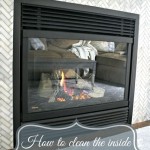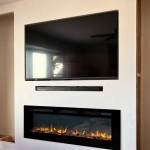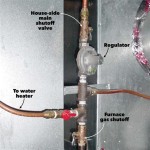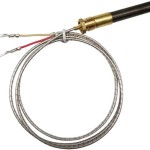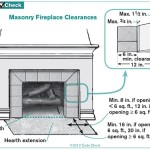Shelf Mantels For Fireplaces: A Comprehensive Guide
A fireplace mantel serves as a prominent architectural feature in a room, often acting as a focal point that draws the eye and anchors the space. While the entire mantel structure can be elaborate and incorporate various design elements, the shelf mantel is a common and versatile option. This type of mantel consists primarily of a horizontal shelf, often supported by corbels or brackets, offering both aesthetic appeal and functional utility. This article will delve into the various aspects of shelf mantels for fireplaces, exploring their design considerations, material options, installation processes, and safety protocols.
The shelf mantel provides a surface for displaying decorative items such as picture frames, candles, vases, and seasonal decorations. It can also serve a practical purpose by providing a place to rest remote controls, books, or other small objects. The design of a shelf mantel can range from simple and minimalist to ornate and detailed, allowing it to complement a wide range of interior design styles, from traditional to contemporary. Its versatility makes it a popular choice for homeowners seeking to enhance the ambiance and functionality of their fireplace setting.
Design Considerations for Shelf Mantels
Choosing the right shelf mantel necessitates careful consideration of several design elements to ensure it complements the fireplace and the surrounding room. These elements include the size and proportions of the mantel, the style and detailing, and the overall aesthetic impact it will have on the space.
Size and Proportions: The size of the shelf mantel should be proportionate to the size of the fireplace and the room. A mantel that is too small may appear insignificant, while a mantel that is too large may overwhelm the space. The length of the mantel should ideally extend beyond the width of the fireplace opening, creating a balanced and visually appealing effect. The depth of the shelf should also be considered, as it will determine the amount of space available for displaying items. Measuring the fireplace and the surrounding wall space is crucial before selecting a mantel.
Style and Detailing: Shelf mantels are available in a wide variety of styles, ranging from simple and clean-lined to ornate and intricately carved. The chosen style should complement the architectural style of the home and the existing decor. For example, a traditional home might benefit from a mantel with detailed moldings and corbels, while a modern home might be better suited to a simple, minimalist mantel with clean lines. The detailing of the mantel, such as the type of wood, the finish, and the presence of carvings or embellishments, can also contribute to its overall aesthetic appeal.
Aesthetic Impact: The shelf mantel serves as a focal point in the room, so its design should enhance the overall aesthetic. Consider the color and texture of the mantel in relation to the fireplace surround and the surrounding walls. A contrasting color can create a striking visual impact, while a complementary color can create a more cohesive look. The texture of the mantel, whether it is smooth and polished or rough and rustic, can also contribute to its overall appeal. Ultimately, the goal is to choose a mantel that complements the fireplace and the room, creating a harmonious and inviting atmosphere.
Material Options for Shelf Mantels
The choice of material for a shelf mantel significantly impacts its appearance, durability, and overall cost. Common materials include wood, stone, and metal, each offering unique characteristics and aesthetic qualities.
Wood: Wood is a popular choice for shelf mantels due to its versatility, warmth, and natural beauty. Different types of wood offer varying levels of durability, grain patterns, and color tones. Popular wood options include oak, maple, pine, and cherry. Oak is known for its strength and durability, while maple is prized for its smooth texture and light color. Pine is a more affordable option, but it is also softer and more susceptible to damage. Cherry is a luxurious option with a rich, reddish-brown color.
The finish applied to the wood mantel can also affect its appearance and durability. Common finishes include paint, stain, and varnish. Paint can be used to create a variety of colors and textures, while stain enhances the natural grain of the wood. Varnish provides a protective layer that helps to prevent scratches and stains. When selecting a wood mantel, it is important to consider the type of wood, the finish, and the overall aesthetic you are trying to achieve.
Stone: Stone mantels offer a sense of elegance, durability, and timeless appeal. Common stone options include marble, granite, limestone, and slate. Marble is known for its luxurious appearance and intricate veining, while granite is prized for its strength and resistance to heat. Limestone is a more affordable option with a natural, earthy look, while slate is a durable and water-resistant material with a dark, sophisticated appearance.
Stone mantels can be custom-cut and shaped to fit any fireplace. However, stone mantels are typically heavier and require professional installation. The cost of a stone mantel can vary depending on the type of stone, the size of the mantel, and the complexity of the design.
Metal: Metal mantels offer a sleek, modern, and industrial aesthetic. Common metal options include steel, iron, and aluminum. Steel is known for its strength and durability, while iron offers a rustic and antique appearance. Aluminum is a lightweight and corrosion-resistant option that is ideal for modern designs.
Metal mantels can be powder-coated or painted to create a variety of colors and finishes. They can also be combined with other materials, such as wood or stone, to create a unique and visually appealing design. Metal mantels are typically more expensive than wood mantels but can last for many years with proper care.
Installation and Safety Considerations
Installing a shelf mantel requires careful planning and attention to safety protocols to ensure it is properly secured and does not pose a fire hazard. Proper installation is crucial for both the aesthetic appeal and the safety of the fireplace area.
Installation Process: The installation process will vary depending on the type of mantel and the construction of the fireplace. Generally, the process involves measuring and marking the desired location of the mantel, attaching mounting brackets to the wall, and securing the mantel to the brackets. It is important to use appropriate hardware and tools to ensure that the mantel is securely attached to the wall. For heavier mantels, it is recommended to consult with a professional installer to ensure that the installation is done correctly and safely.
Before beginning the installation, it is important to ensure that the fireplace is properly vented and that there are no combustible materials within the required clearance distance. The National Fire Protection Association (NFPA) provides guidelines for fireplace clearances, which should be followed to prevent fire hazards. These guidelines typically require a minimum distance between the top of the fireplace opening and the bottom of the mantel. The specific clearance requirements will vary depending on the type of fireplace and the materials used in its construction.
Safety Protocols: Safety is paramount when installing a shelf mantel. The mantel should be installed at a safe distance from the fireplace opening to prevent it from catching fire. It is also important to ensure that the mantel is securely attached to the wall to prevent it from falling. When using a wood mantel, it is important to treat it with a fire-retardant coating to reduce the risk of fire. Never place flammable items, such as candles or paper, directly on the mantel. Regular inspections of the mantel and the fireplace are also recommended to ensure that they are in good condition and that there are no potential fire hazards.
Local building codes may also have specific requirements for fireplace mantels. It is important to check with your local building department to ensure that your installation complies with all applicable codes. Failure to comply with these codes may result in fines or other penalties.
Additionally, when working with power tools, it is important to wear appropriate safety gear, such as safety glasses and gloves. Always follow the manufacturer's instructions when using power tools. If you are not comfortable installing the mantel yourself, it is best to hire a professional installer to ensure that the job is done correctly and safely. A professional installer will have the necessary experience and expertise to install the mantel according to all applicable codes and safety standards.

Modern Farmhouse Fireplace Mantel

Large Wood Beam Mantle Shelf 78 84 Floating Fireplace Mantel

Chesapeake Old World Banding Steel Fireplace Mantel Shelf

Steel Fireplace Mantel Shelf You Can Customize To Preference

Mantels And Fireplace Surrounds Built By The Wood Works Williamstown

Modern Floating Mantel Shelf Industrial Mantle Contemporary

Barton 72 In W Floating Vintage Wood Fireplace Mantel Wall Shelf Beam Easy Mount White 95159 The Home Depot

Fireplace Mantel With Corbels Electric Decor Shelf White Com

Barton Fireplace Mantel Shelf 48 Floating Wall Beam Easy Mount Vintage Ash Wood

Country Living 72 In W X 5 H 9 D White Wash Pine Hollow Farmhouse Fireplace Mantel The Mantels Department At Com
Related Posts

